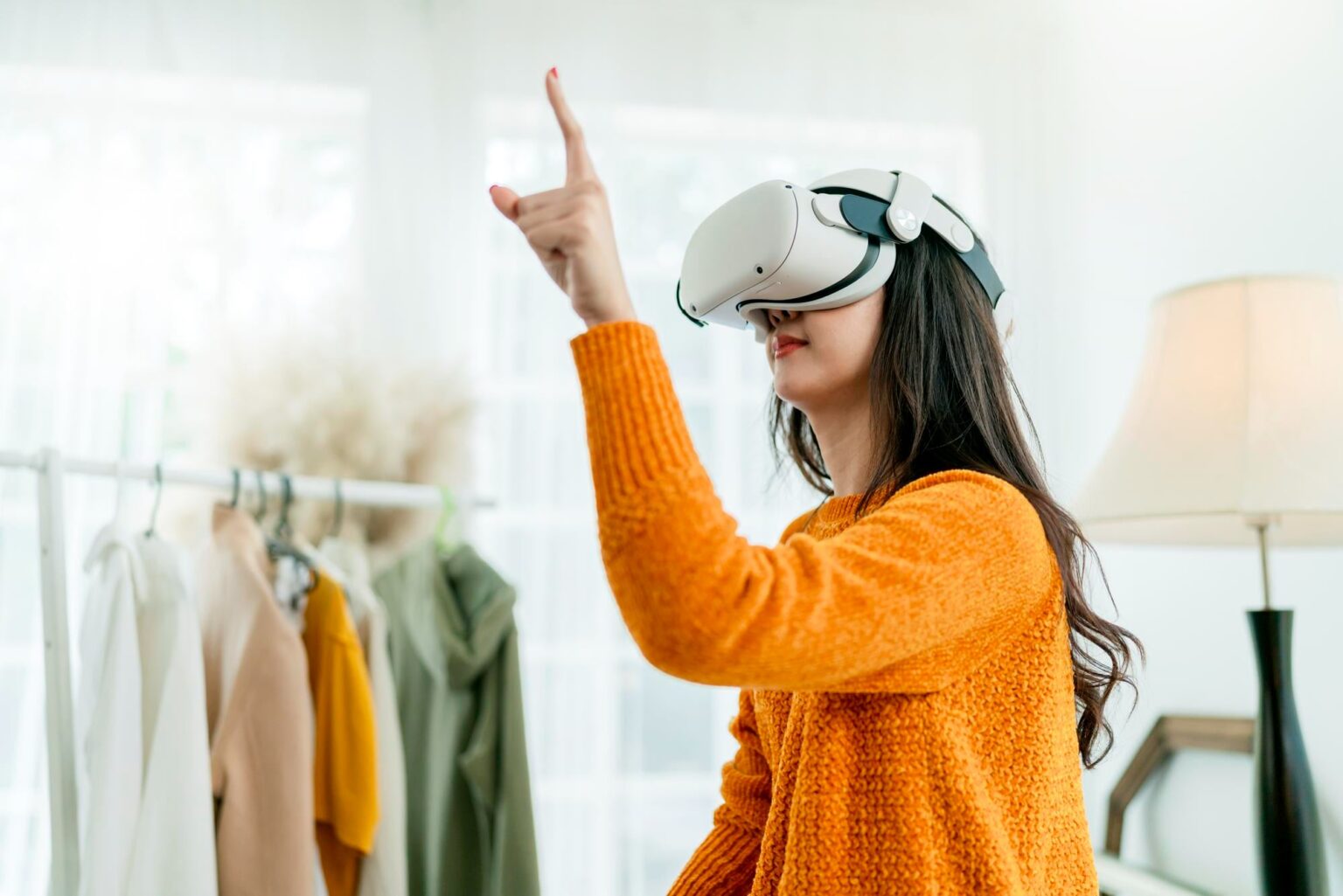Augmented Reality (AR) is transforming the retail industry by offering immersive and interactive experiences for customers. AR technology overlays digital content onto the real world, enhancing the shopping process and providing unique benefits to both customers and retailers. Here’s how AR is being used in retail, particularly in the areas of virtual try-on and enhanced in-store experiences:
- Virtual Try-On: AR enables customers to virtually try on products before making a purchase. This is particularly valuable in industries such as fashion, cosmetics, and eyewear, where customers want to see how a product looks on them. AR-powered virtual try-on solutions use facial or body recognition technology to superimpose digital representations of products onto the customer’s image in real-time. Customers can see themselves wearing different outfits, trying on various shades of makeup, or testing out different glasses frames, all without physically trying on the products. This enhances the online shopping experience, increases customer confidence in their purchase decisions, and reduces product returns.
- Product Visualization: AR allows customers to visualize products in their physical environment. For example, furniture retailers can use AR to enable customers to see how a piece of furniture would look in their home by overlaying a virtual image of the furniture onto the real-world view through a smartphone or tablet. This helps customers make more informed purchasing decisions and eliminates the guesswork of whether a product will fit or match their existing decor. Similarly, AR can be used to showcase how appliances, electronics, or home improvement products will look and function in a customer’s space.
- Interactive In-Store Experiences: AR can enhance the in-store shopping experience by providing interactive and engaging elements. Retailers can deploy AR solutions in physical stores through dedicated AR displays, smart mirrors, or mobile apps. For example, customers can scan product labels or displays with their smartphones to access additional product information, reviews, or virtual demonstrations. AR can also be used to provide personalized recommendations, promotions, or virtual guides that lead customers through the store, showcasing relevant products and offers based on their preferences or previous purchases.
- Gamification and Brand Engagement: AR can add an element of gamification to the retail experience, creating interactive and memorable interactions with brands. Retailers can use AR-powered games or challenges to engage customers and incentivize their participation. For instance, customers may be encouraged to explore the store, scan specific products, or complete certain tasks within an AR-based game. This not only entertains customers but also increases their time spent in-store and promotes brand loyalty.
- Virtual Shopping Assistants: AR can act as a virtual shopping assistant, providing customers with personalized recommendations and guidance. Using customer data, AR can offer product suggestions, show complementary items, or display reviews and ratings. By tailoring the shopping experience to individual preferences and needs, retailers can enhance customer satisfaction and drive sales.
- Online-to-Offline Integration: AR can bridge the gap between online and offline retail experiences. Customers can use AR-powered mobile apps or web platforms to virtually explore products, check availability in nearby stores, and reserve or purchase items for in-store pickup. This seamless integration allows customers to transition smoothly between online browsing and in-store shopping, creating a cohesive and convenient shopping journey.
- Data Analytics and Insights: AR in retail generates valuable data and insights. Retailers can analyze customer interactions, preferences, and behaviors within AR experiences to gain a deeper understanding of customer preferences and optimize their marketing and merchandising strategies. This data can inform inventory management, personalized marketing campaigns, and the development of new products and services.
AR is revolutionizing the retail industry by providing engaging, interactive, and personalized experiences for customers. It enables virtual try-on, improves in-store interactions, enhances product visualization, and blurs the line between online and offline shopping. By leveraging AR technology, retailers can create memorable and immersive experiences that differentiate their brand, increase customer satisfaction, and drive sales.



